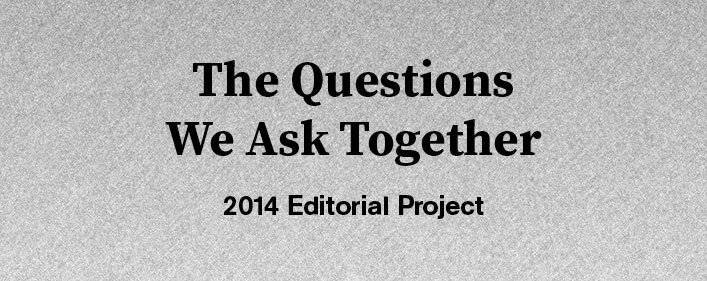How do we know if social practice is being transformational?
We have been here before, and we will be here again. So let’s take this question through the gauntlet of arguments and counter-arguments that are often mobilized around it. So, on the one hand, we can remember that all art transforms, not only social practice art. Art exerts effects on receivers whether or not it understands itself to be addressing them, and whether or not its maker seeks to legitimate her practice through recourse to a domain outside it. Despite the fact that art only sometimes seeks to transform, art always gets celebrated for and accused of making effects beyond itself. Transformation is not a social practice invention.
On the other hand, a social practice context has enabled us to think more deeply about what effects might be and how we propel and define them. Transformation is context-specific and subject to multiple definitions. It can be material––a distribution of resources––or immaterial––a provocation of consciousness. It can be short-term or long-term, intended for one or intended for a crowd. Effects might be conceived with input from the people whom they engage, and effects can strategically––and sometimes not strategically––catch those people unawares. Effects can feel enabling, and effects can feel damaging. They can be economic, ethical, or physical, and effects can be metaphors for transformations other than themselves. The transformations of artistic practice can produce outcomes, but they can be perverted by the pressure for outcomes; outcome-pressure can neutralize energy and narrow possibility into predetermined and measurable pathways. One artistic practice’s transformation can be inspiration to some and debilitating to others, establishing specious standards for the verifiability of ‘effect-making’ wholly inappropriate to other contexts. If having an effect is important to one’s conception of art practice, then it seems important to have a clearer sense of how transformation might be defined and to cultivate a robust language for articulating why some definitions and measures lead us astray.
On the other, other hand, there is something odd about the structure of a query about whether one is being transformational. The question betrays a degree of investment in older conceptions of authorship, i.e. a discourse that social practice often seeks to unsettle. The urge to take credit for transformation can slide back into an older subject/verb/object construction that naturalizes transformation as the product of artistic volition: I made that. Is it necessary to claim ‘an effect’ as an artist’s product? Is it exciting and legitimating and career-building to place one’s signature on transformation? Sometimes, of course, it is useful and conceptually interesting to place the apparatus of a social movement inside one’s art practice, whether by lending art’s protections from censorship, by redistributing the income of an art market, or by placing the social within a conceptual frame in order to allow for its de-familiarization.
Sometimes though, probably more often, it seems useful to see one’s practice in relation to social movements that are bigger than you, that have been going on longer than you, that will go on longer and create more transformations than you can ever claim. The entitlements of artistic freedom and the delusions of artistic presumption still linger in the social practice field, and it might be time for some of those entrepreneurial claims to take a back seat. This is where the individuating, privatizing residue of artistic autonomies and artistic signatures have to be confronted. This is where you stop revelling in how hard your propositions got other people to work. This is when you stop putting your name on other people’s labor. Detaching from authorship and the subject––I/we––who claims transformational status means connecting to a space and to processes whose effects are not fully imaginable in advance by the fleets of people who make them happen. This is a space and process where people’s actions, behaviors, and daily coordination add up to more than the sum of the parts that they think they control.
In such a space, the notion of ‘being transformational’ starts to feel less like a targeted goal and more like a cultivated relation. In addition to asking whether we are making effects, we might also want to ask how effects make us.
About the contributor: Shannon Jackson is the Richard and Rhoda Goldman Chair in the Arts and Humanities at the University of California, Berkeley, where she is Professor of Rhetoric and of Theater, Dance and Performance Studies. She is also the Director of the Arts Research Center. Shannon’s most recent book is Social Works: Performing Art, Supporting Publics (Routledge 2011), and she is working on a book about The Builders Association. Shannon’s previous books are Lines of Activity: Performance, Historiography, and Hull-House Domesticity (2000) and Professing Performance: Theatre in the Academy from Philology to Performativity (2004).
Shannon was an Erasmus Mundus visiting professor in Paris at the Maison des Sciences de l’Homme Nord and at the Université Libre de Bruxelles for the 2008-09 academic year. Before moving to Berkeley, she was an assistant professor of English and Literature at Harvard University from 1995 to 1998. She used to perform and direct, before her children and her professorial “day job” took over. berkeley.edu/people/shannon-jackson/
